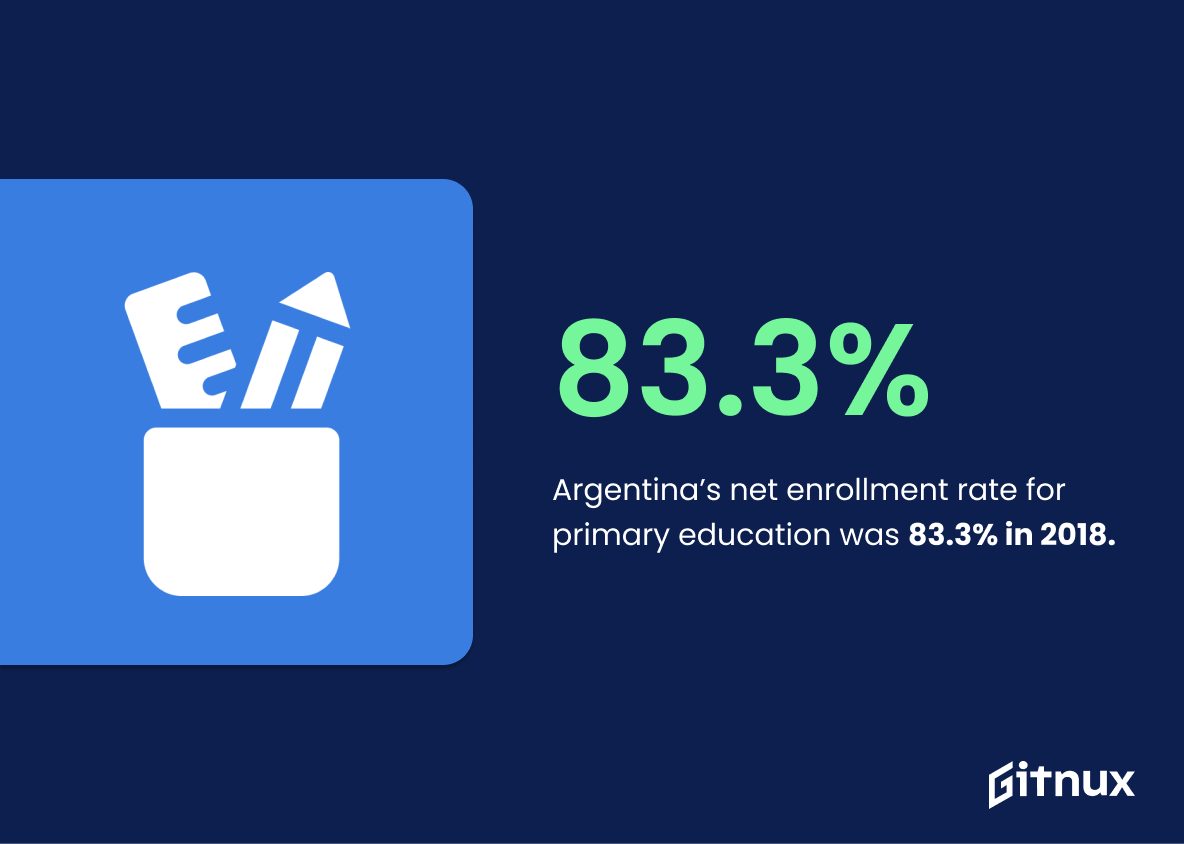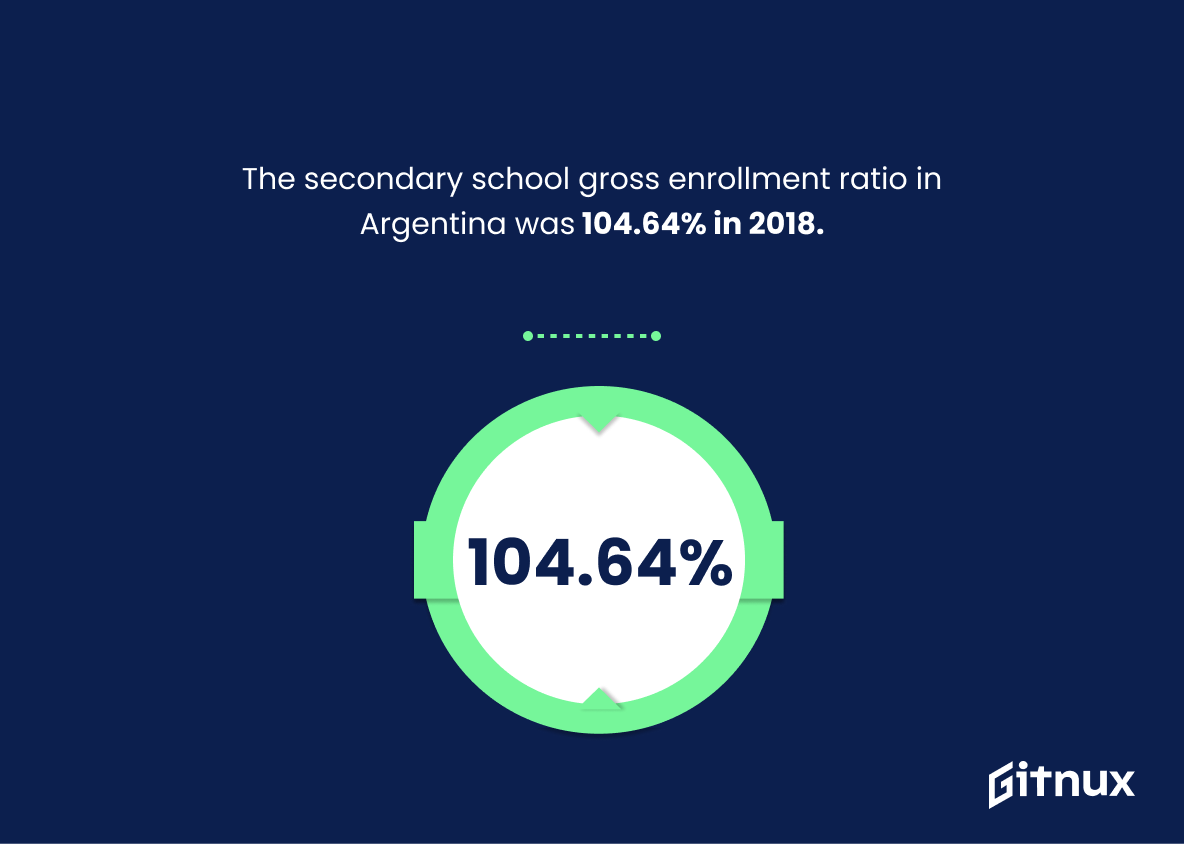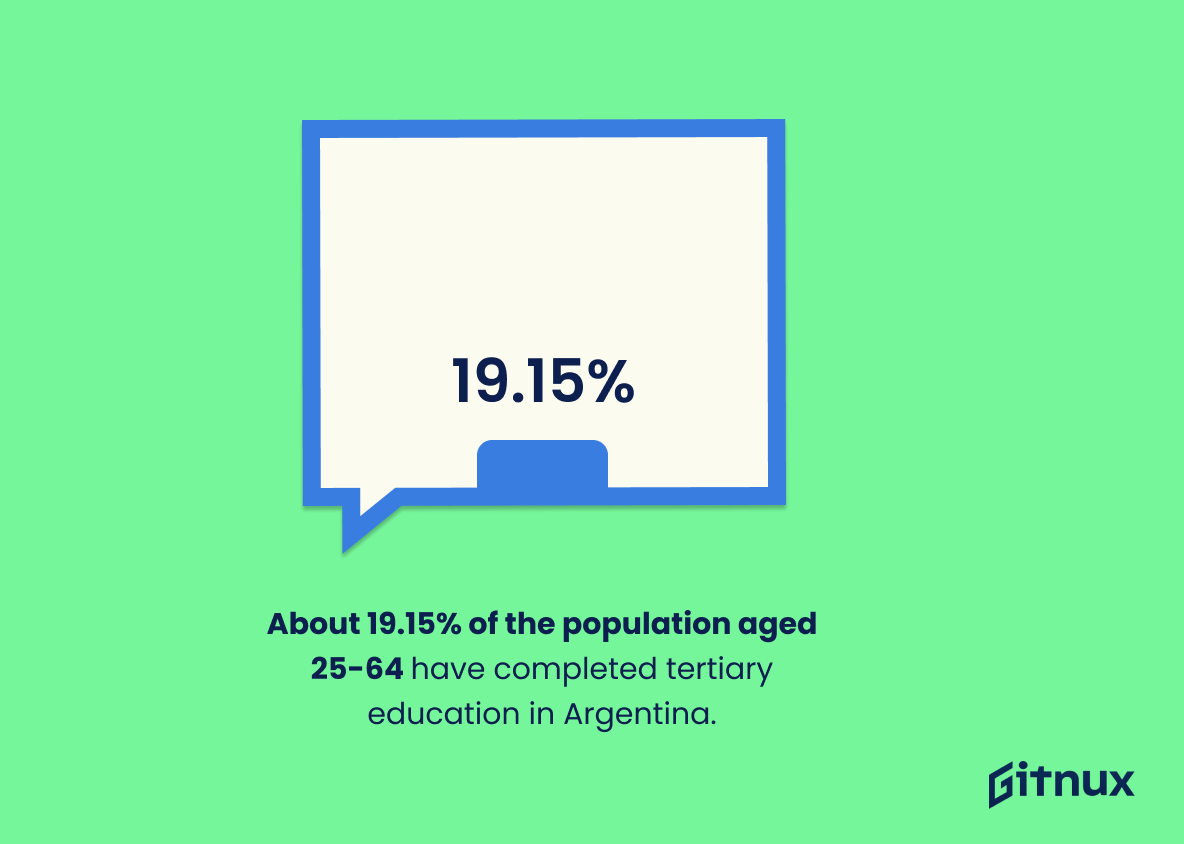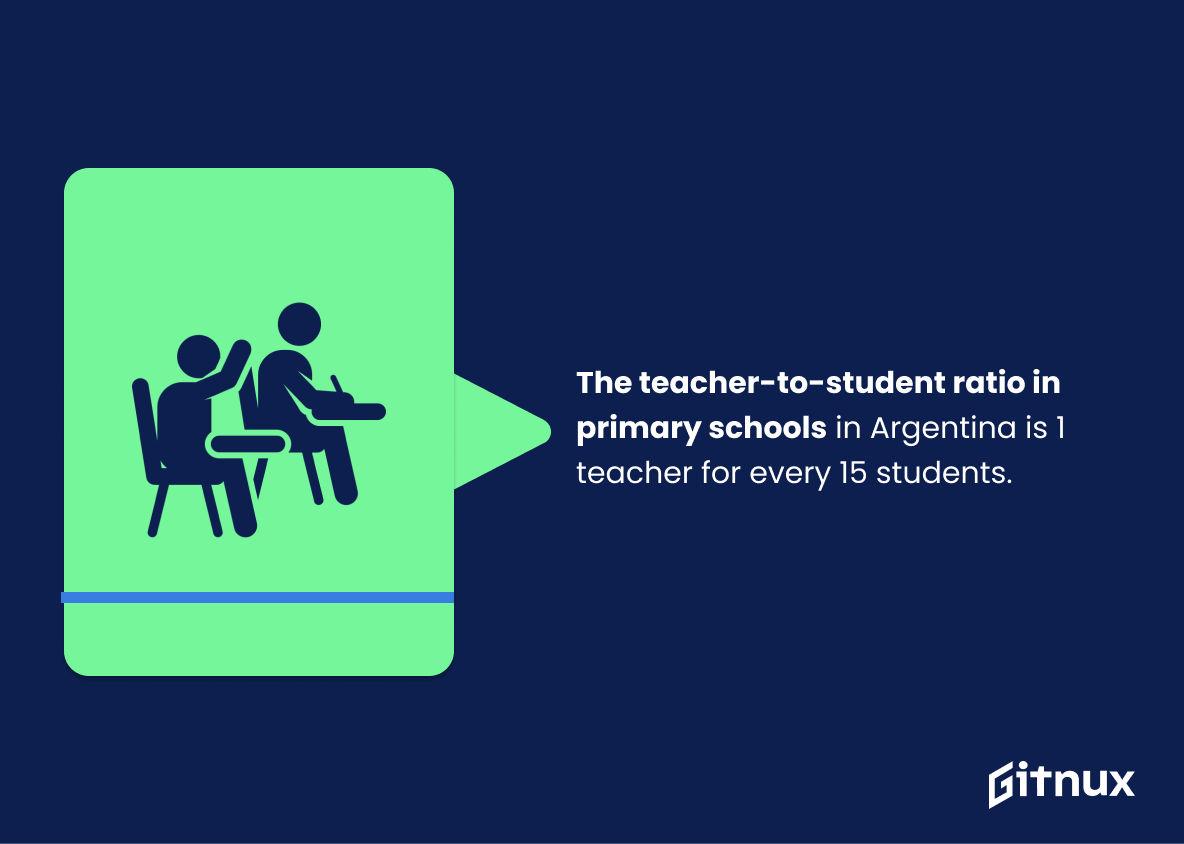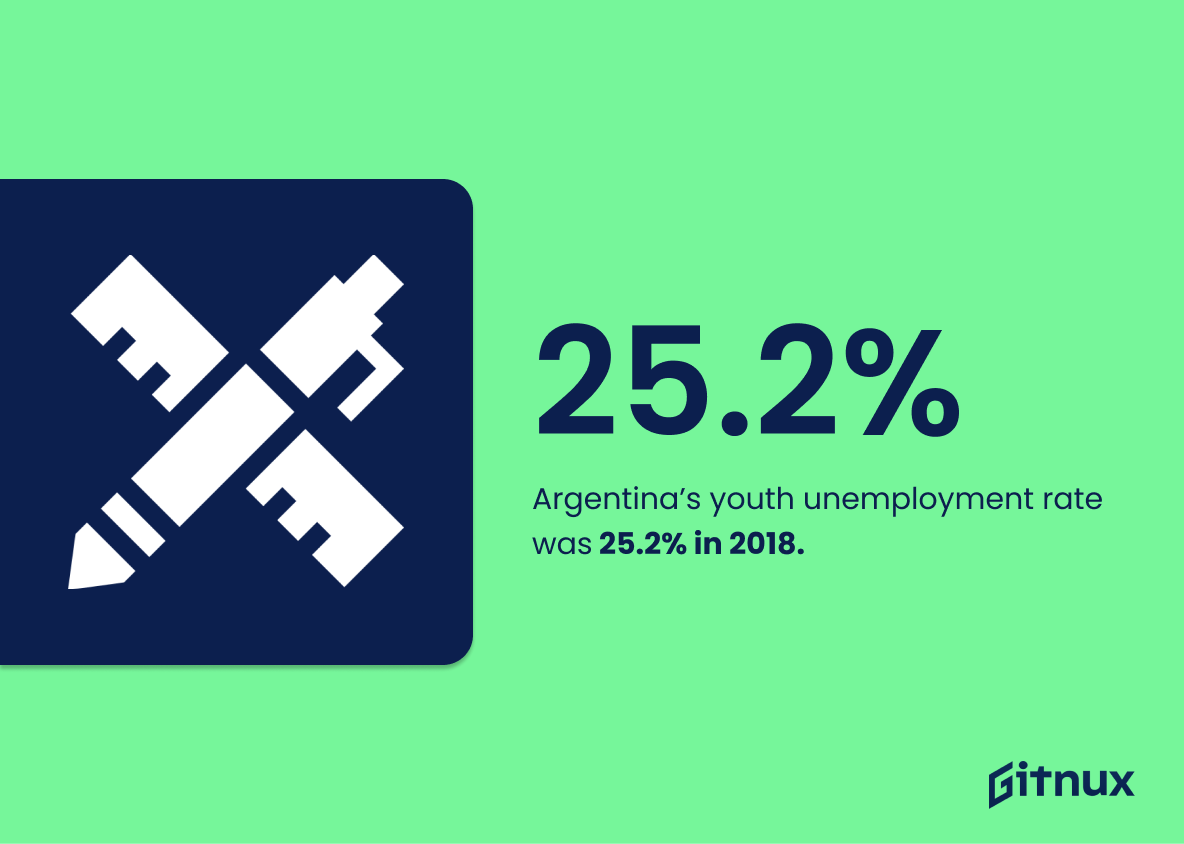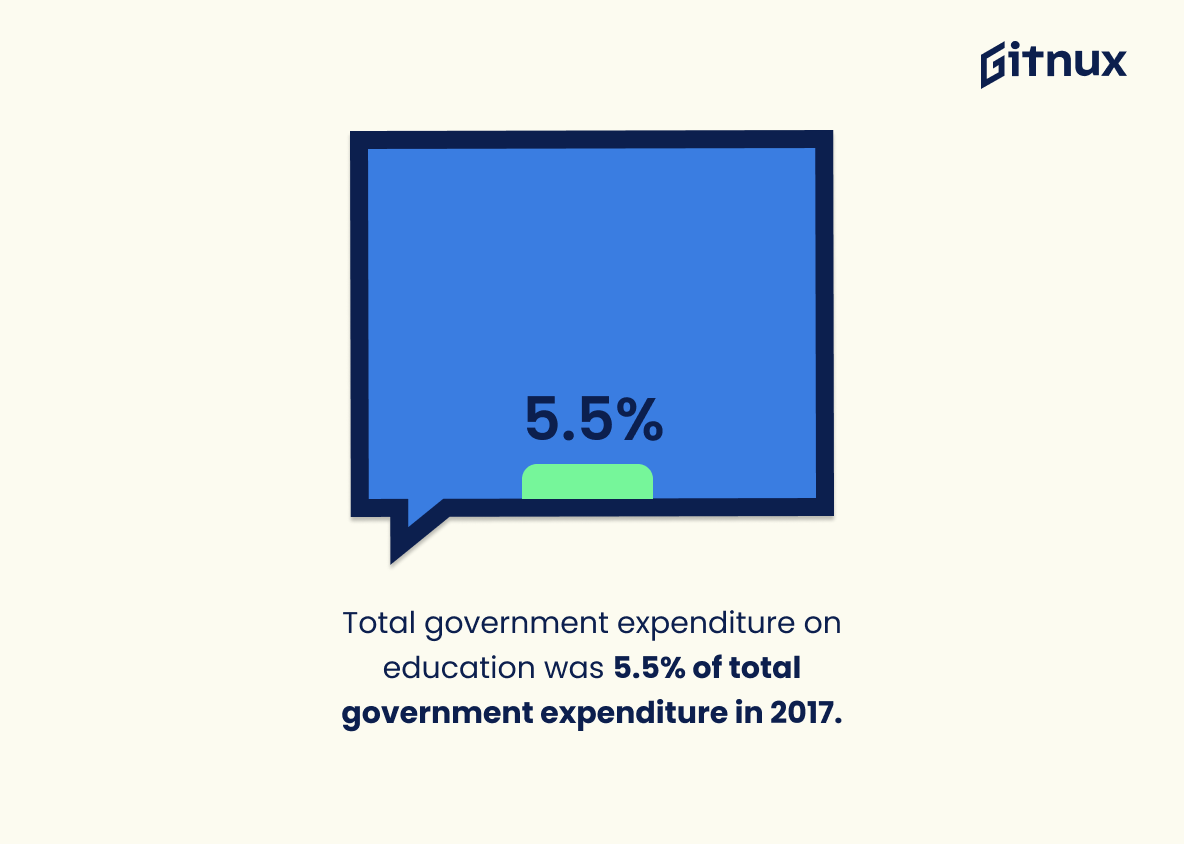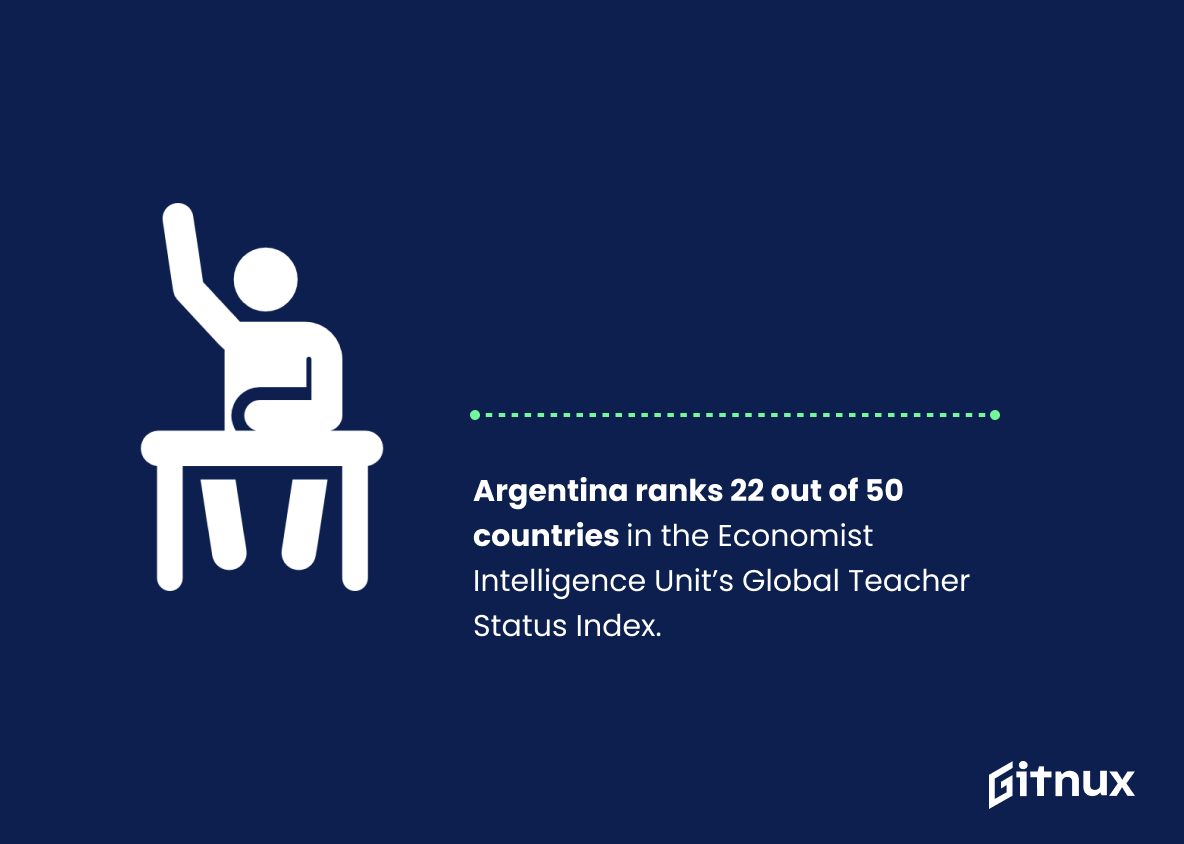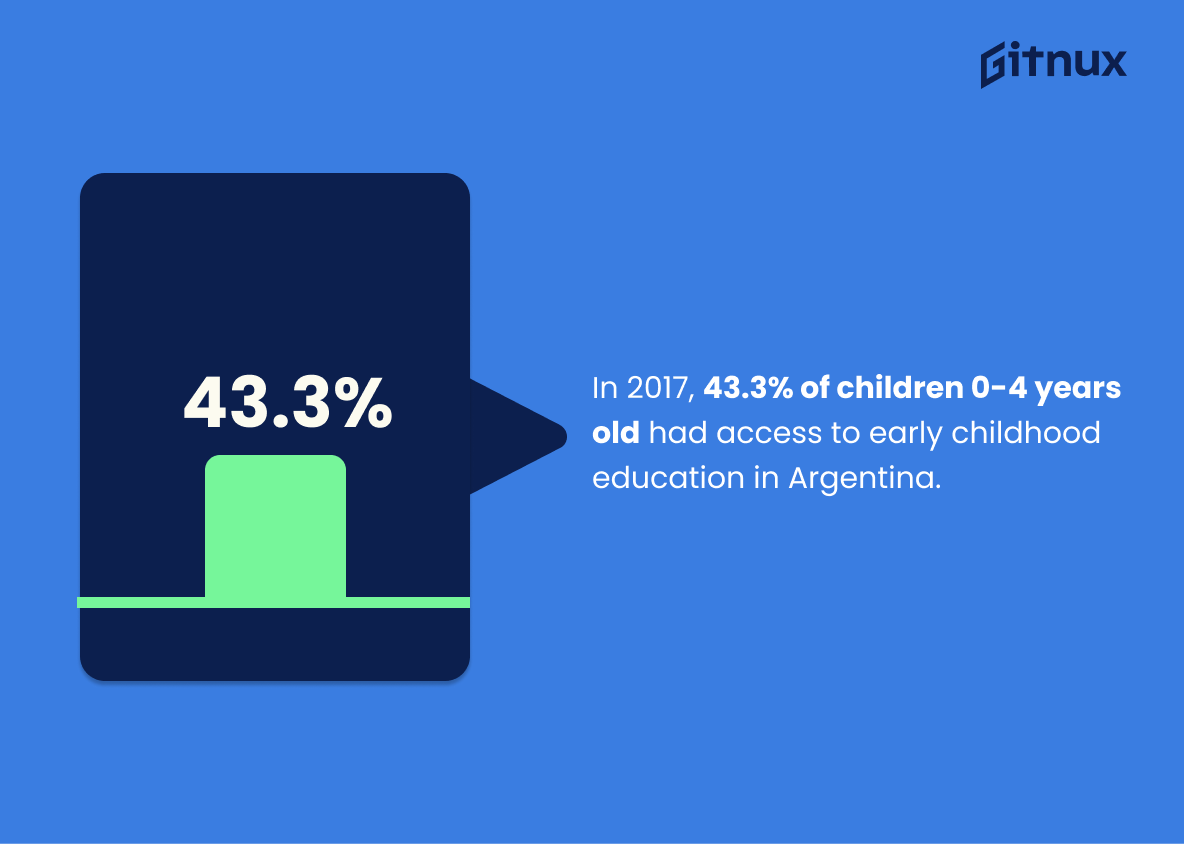Argentina is a country with an impressive education system. According to the World Bank, national government funding for education in Argentina was around 5.5% of GDP in 2021. The adult literacy rate stands at 99.1%, and net enrollment rates for primary and secondary school were 83.3% and 61.3%, respectively, in 2018; while gross enrollment ratio for tertiary education was 86%. Primary school gross enrollment ratio stood at 113% whereas secondary school gross enrollment ratio was 104%. Average years of schooling among population aged 25 or older is 9.8 years, 19% have completed tertiary studies, there are 2256 registered higher educational institutions as well as 15 780 international students studying here according to 2015 data from UNESCO Institute of Statistics (UIS).
In 2017 Argentina ranked 47 out of 121 countries on the World Talent Ranking on educational investment and development by IMD Business School Switzerland; 22nd out 50 countries on Global Teacher Status Index by Varkey Foundation UK; 43 % children 0-4 had access to early childhood education according to Argentinean Government’s official website – all these facts point towards high quality standards set up within this South American nation when it comes to learning opportunities available both domestically and internationally alike.
The fact that national government funding for education in Argentina is around 5.5% of GDP in 2021 is a telling statistic when it comes to the state of education in the country. It speaks to the level of investment that the government is making in the education system, and the resources available to students and teachers. This statistic is a key indicator of the quality of education in Argentina, and can provide insight into the challenges and opportunities that the country faces in terms of educational attainment.
Argentina has an adult literacy rate of 99.1% for both males and females.
The fact that Argentina has an adult literacy rate of 99.1% for both males and females is a testament to the country’s commitment to education. It is a clear indication that the nation is dedicated to providing its citizens with the knowledge and skills necessary to succeed in life. This impressive statistic is a reflection of the hard work and dedication of the country’s educators, administrators, and students.
Argentina Education Statistics Overview
Argentina’s net enrollment rate for primary education was 83.3% in 2018.
The fact that Argentina’s net enrollment rate for primary education was 83.3% in 2018 is a testament to the country’s commitment to providing quality education to its citizens. It is a sign that the government is taking steps to ensure that all children have access to the educational opportunities they need to succeed. This statistic is a positive indicator of the progress that has been made in the country’s educational system and is a cause for celebration.
Argentina’s net enrollment rate for secondary education was 61.3% in 2018.
The statistic of Argentina’s net enrollment rate for secondary education in 2018 is a telling indication of the state of education in the country. It reveals that while there is progress being made in terms of access to secondary education, there is still a significant portion of the population that is not receiving the education they need. This statistic is a reminder that there is still much work to be done in order to ensure that all Argentinians have access to quality education.
Gross enrollment ratio for tertiary education in Argentina was 86.3% in 2018.
The impressive statistic of 86.3% gross enrollment ratio for tertiary education in Argentina in 2018 is a testament to the country’s commitment to providing quality education to its citizens. This statistic is indicative of the progress Argentina has made in the field of education, and serves as a reminder of the importance of investing in education for the future of the nation.
The primary school gross enrollment ratio in Argentina was 113.14% in 2018.
This statistic is a telling indication of the success of Argentina’s educational system. It shows that more than 100% of the primary school-aged population is enrolled in school, indicating that the country is making strides in providing educational opportunities to its citizens. This is an important factor in the overall development of the country, as it helps to ensure that the next generation is equipped with the skills and knowledge necessary to succeed in the future.
The secondary school gross enrollment ratio in Argentina was 104.64% in 2018.
This statistic is a telling indication of the success of Argentina’s educational system. It shows that the country has achieved a high level of enrollment in secondary schools, with more students enrolled than the total number of students eligible to attend. This is a positive sign that Argentina is making strides in providing quality education to its citizens.
Average years of schooling in Argentina for population aged 25 and older is 9.8 years.
The average years of schooling in Argentina for population aged 25 and older is a telling statistic that speaks volumes about the educational opportunities available in the country. It serves as a benchmark for the educational attainment of the population, and provides insight into the quality of education available in Argentina. This statistic is an important indicator of the country’s educational progress and can be used to measure the effectiveness of educational policies and initiatives.
About 19.15% of the population aged 25-64 have completed tertiary education in Argentina.
This statistic is a telling indication of the educational attainment of the population in Argentina. It provides insight into the educational opportunities available to the population aged 25-64, and the level of educational attainment they have achieved. This information is essential in understanding the educational landscape of Argentina, and can be used to inform policy decisions and initiatives to improve educational outcomes.
In 2017, Argentina had 2,256 registered higher education institutions.
This statistic is a telling indication of the sheer breadth of educational opportunities available in Argentina. It speaks to the country’s commitment to providing its citizens with access to higher education, and the potential for students to pursue a wide range of educational paths.
The teacher-to-student ratio in primary schools in Argentina is 1 teacher for every 15 students.
This statistic is a telling indication of the state of primary education in Argentina. It speaks to the availability of resources and the quality of instruction that students are receiving. With only one teacher for every fifteen students, it is likely that students are not receiving the individualized attention they need to succeed. This could have a lasting impact on the educational outcomes of the country’s youth.
The teacher-to-student ratio in secondary schools in Argentina is 1 teacher for every 12 students.
The teacher-to-student ratio in secondary schools in Argentina is a telling statistic when it comes to the state of education in the country. It speaks to the availability of resources and the quality of instruction that students are receiving. With only one teacher for every twelve students, it is clear that the educational system is stretched thin and that students may not be receiving the individual attention they need to succeed.
Argentina’s youth unemployment rate was 25.2% in 2018.
The statistic of Argentina’s youth unemployment rate in 2018 paints a concerning picture of the state of education in the country. With such a high rate of unemployment among young people, it is clear that the educational system is not adequately preparing them for the job market. This has serious implications for the future of Argentina’s economy and society.
Total government expenditure on education was 5.5% of total government expenditure in 2017.
The statistic that total government expenditure on education was 5.5% of total government expenditure in 2017 is a telling indication of the priority that the Argentine government places on education. This low percentage of expenditure suggests that the government is not investing enough in the education system, which could have a detrimental effect on the quality of education in the country.
Argentina ranks 22 out of 50 countries in the Economist Intelligence Unit’s Global Teacher Status Index.
This statistic is a telling indication of the state of education in Argentina. Ranking 22 out of 50 countries in the Economist Intelligence Unit’s Global Teacher Status Index implies that Argentina is not doing as well as other countries in terms of teacher status and respect. This is an important factor in the overall quality of education in the country, and it is something that should be addressed in order to improve the educational system in Argentina.
In 2017, 43.3% of children 0-4 years old had access to early childhood education in Argentina.
This statistic is a telling indication of the progress Argentina has made in providing early childhood education to its youngest citizens. It speaks to the commitment of the country to ensure that its youngest citizens have access to the educational opportunities they need to thrive. It is a sign that Argentina is taking steps to ensure that its youngest citizens have the best possible start in life.
Conclusion
Argentina has made significant progress in the field of education, with a high adult literacy rate and impressive enrollment rates for primary, secondary and tertiary education. The national government is investing 5.5% of GDP into educational funding to ensure that all citizens have access to quality learning opportunities. Argentina also boasts an impressive number of higher education institutions as well as international students studying there each year.
Furthermore, gender parity in tertiary enrollment favors women while early childhood programs are providing more children aged 0-4 years old with access to pre-schooling than ever before. Despite these successes however, youth unemployment remains relatively high at 25%. With continued investment from the government and other stakeholders in both infrastructure and human capital development initiatives, Argentina can continue its journey towards becoming one of Latin America’s most educated nations
References
0. – https://www.www.varkeyfoundation.org
1. – https://www.www.argentina.gob.ar
2. – https://www.data.worldbank.org
3. – https://www.www.oecd.org
4. – https://www.en.unesco.org
